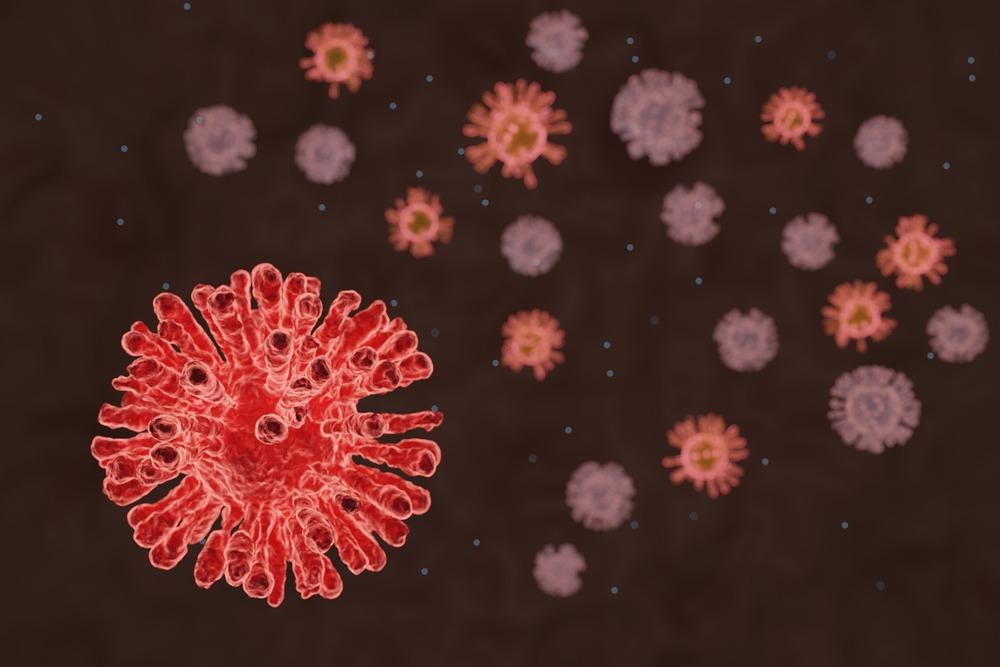As the world learns to live with COVID-19, innovative solutions will be needed to control the spread of the virus. Research published Sensors and Actuators: B. Chemical has reported on the development of an extremely sensitive and label-free immunosensor that can monitor the SARS-CoV-2 spike protein.

Study: Controlled, partially exfoliated, self-supported functionalized flexible graphitic carbon foil for ultrasensitive detection of SARS-CoV-2 spike protein. Image Credit: Sutthituch/Shuttertsock.com
The COVID-19 Pandemic
Since December 2019, the COVID-19 pandemic has continued to cause huge health, economic, and societal issues worldwide. As of February 2022, there have been more than four hundred million cases globally, with nearly six million deaths. Untold numbers of individuals have been diagnosed with “long covid” and lockdowns have caused massive economic costs. It is unknown what the long-term effects of the pandemic will be or when it will be over, despite successful global vaccination programs.
The main SARS-CoV-19 transmission routes include droplet transmission and, to a lesser degree, routes such as fomites. Many infected individuals are asymptomatic, which exacerbates the issues with infection control. Masks, social distancing, isolation, and work-from-home mandates have been a common feature of life worldwide since early 2020, helping to control the spread.
Detecting SARS-CoV-2
Currently, the main method for detecting the SARS-CoV-2 virus in infected patients is by using reverse transcription-polymerase chain reactions. However, there are drawbacks to this method, including cost, time, and the need for highly trained personnel. Additionally, there is the risk of medical professionals and technicians becoming infected due to the virus’s highly contagious and transmissible nature.
Serological lateral flow assays are also used to diagnose the disease by detecting antibodies in patients and are useful for self-testing due to their fast response time and specificity. However, these still have problems with returning false negatives due to a lack of sensitivity, especially if the individual does not perform the test properly. Moreover, the widespread use of tests increases plastic waste in the environment.
Currently, there is a lack of literature on methods for detecting spike protein antigens for the diagnosis of SARS-CoV-2. The spike protein is the main structure in the virus that helps it infect patients. Techniques thus far investigated in studies include optical methods such as surface-enhanced Raman spectroscopy and electrochemical techniques such as field-effect transistors and nanoparticle-modified electrodes.
Electrochemical-Transduction Devices
Electrochemical-transduction devices have emerged recently as attractive candidates for spike protein antigen detection. These devices have several advantages for immunosensing and biosensing applications, including point-of-need and point-of-care testing and rapid measurements using only a small sample volume or amount.
Could a New Antimicrobial Coating from Tree Proteins Improve Masks?
Additionally, these devices are advantageous in terms of low cost, portability, and high sensitivity. Furthermore, they can be used to provide label-free detection of target substances through the exploitation of small electrochemical signal changes that result from redox indicators that are induced by the recognition events occurring on the surface of their electrodes.
Amongst the proposed modifiers and electrode materials for these devices, carbon-based materials such as graphene and graphitic carbon nitride have shown exciting potential. The main advantage of these materials is their low cost, non-toxicity, and the ease of introducing functional groups into them. Graphene and functionalized graphene materials are particularly attractive due to the ability to tailor them for the detection of specific biological molecules.
These materials can be produced in powder form from pristine graphite by chemical or mechanical exfoliation, with further surface modification of the starting materials achieved with multiple-stage physical and chemical methods. An easier method is controlled partial exfoliation of commercially available graphitic carbon foils. The synthesized product can then be used as self-supporting electrodes and electron transport channels.
The Study
The study published online in Sensors and Actuators: B has presented a novel low-cost electrochemical sensor for detecting the SARS-CoV-2 spike protein. The system used partially oxidized graphitic carbon films functionalized with ethylenediamine. The functional group is covalently bonded to the graphitic carbon film using activators. The authors have termed this functionalized graphitic carbon material EDA-GCF.
The SARS-CoV-2 spike protein is immobilized on the EDA-GCF where the spike protein antigen can bond to it with high affinity. A current change at the system’s redox couple is created, depending on the concentration of the spike protein. Evaluation of the system’s performance was conducted using samples of artificial human saliva, diluted blood plasma, and a phosphate buffer solution.
Selectivity, reproducibility, stability, and repeatability were studied with a variety of analytical and experimental techniques. Results indicated that the proposed novel immunosensor is suitable as an accurate and reliable disposable detection system for SARS-CoV2, with comparable or better general analytical performance than systems currently reported in the literature.
Moreover, the limit of detection was lower than commercial point-of-care antigen tests. Clinical performance was comparable to reverse transcription-polymerase chain reaction tests. The authors have stated that the study could open avenues for developing systems using other low-cost carbon-based electrodes such as carbon fiber sheets and carbon cloth.
Further Reading
Adeel, M et al. (2022) Controlled, partially exfoliated, self-supported functionalized flexible graphitic carbon foil for ultrasensitive detection of SARS-CoV-2 spike protein [online] Sensors and Actuators B: Chemical 359: 131591 | sciencedirect.com. Available at: https://www.sciencedirect.com/science/article/pii/S0925400522002337
Disclaimer: The views expressed here are those of the author expressed in their private capacity and do not necessarily represent the views of AZoM.com Limited T/A AZoNetwork the owner and operator of this website. This disclaimer forms part of the Terms and conditions of use of this website.